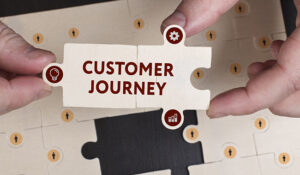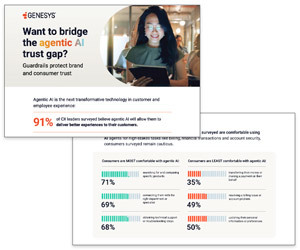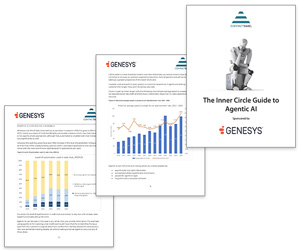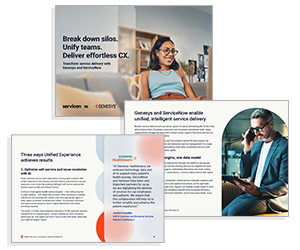Your customers have goals, and they want to reach them efficiently — whether it’s transferring money or transferring their internet service to a new address.
And the steps your customers take to accomplish these goals vary. Some might use multiple touchpoints across different points in time, while others stick to a single channel.
No matter how they reach out, your customers judge each interaction with your brand as part of a connected experience. Connected, low-effort experiences drive loyalty and trust. And that has a positive impact on business objectives like growth, retention and cost to serve.
So, don’t simply improve single interactions in isolated channels — focus on optimizing end-to-end journeys, noted Ian Felder, Senior Product Marketing Manager at Genesys in the Xperience 2022 session “Advance from touchpoint personalization to customer journey orchestration.”
Go Beyond Traditional Personalization Methods
Orchestrating journeys starts with customer journey data that’s typically stored in systems and databases across the organization.
But many companies have disconnected systems that hamper data integration. That means each team must make personalization decisions based on limited data, which makes it difficult to personalize customer experiences — and especially to personalize them at scale.
Plus, traditional approaches to personalization often use rules-based workflows that are difficult to maintain.
These rules are based on what a customer has done recently or within one particular channel. Each interaction doesn’t reflect prior experiences or current intent; and customers have to deal with frustrating, disjointed experiences.
Journey Orchestration: The Next Stage of Personalization
Customer journey orchestration determines the most relevant interactions based on each customer’s current goals and prior experiences. This information makes it possible to improve customer experience and business outcomes in real time.
“Customer journey orchestration software takes companies beyond traditional personalization methods,” said Felder.
It leverages customer data from every channel, source or system within — and beyond — the contact centre. Each interaction reflects a customer’s entire experience with your organization, not just their most recent interaction.
The shift to journey orchestration often goes hand in hand with other customer-centric approaches:
- Prioritizing customer experience metrics like satisfaction and effort over operational metrics like average handle time and FCR
- Connecting siloed data sources to enable a real-time, holistic customer view and support effortless omnichannel experiences
- Placing employee engagement before simple workforce efficiency
- Rethinking the use of artificial intelligence (AI) to automate tasks
- Using the predictive capabilities of AI to orchestrate journeys
Improve Customer Outcomes in Real Time
Aligning on journey-based approaches operationalizes journey optimization. This enables you to optimize specific interactions at individual touchpoints while simultaneously improving an end-to-end customer journey.
This holistic approach ensures there are no unintended consequences from fixing one touchpoint without considering how it affects another.
A good starting point is to create journey-driven audiences. These better reflect individual customer intent and incorporate prior experiences and behaviors.
To do this, define a customer segment using demographics, as well as specific customer behaviors and relevant time constraints.
Then use the audience to guide decision making and real-time actions. For example, you could suppress upsell emails to a segment of customers who are trying to resolve a support issue.
Another journey-based approach, customer journey measurement, supports orchestrating relevant actions and optimizing customer journeys.
“Optimize customer experience and contact centre performance with journey measurement,” noted Felder. That’s crucial to delivering outstanding CX.
This approach enables you to pinpoint what’s driving poor customer experiences across channels, prioritize improvements, quantify the impact on revenue and cost to serve, and increase both customer and employee satisfaction.
And by measuring and optimizing journeys, you can improve employee experiences in two ways:
- Provide agents with each customer’s prior journey data and current intent, along with recommendations to deliver a more personalized interaction.
- Improve predictive routing to better determine which agent should receive a specific customer’s inquiry.
Think Customer-First
“Organizations can’t dictate a customer’s experience. A customer engages with a business in their own way, to achieve their unique goals,” said Felder. “The experience is directed by the customer at their own pace and through the channels they select.”
That’s why organizations need orchestration — now. Shifting from traditional personalization techniques to orchestration lets you create actions that optimize journeys in real time and at scale.
Making it easier for customers to achieve their goals will help you reach yours. When you let your customers lead your CX strategy, you’ll build more trust. That trust pays dividends and will improve your business objectives like reducing churn rates and costs and increasing revenue.
This blog post has been re-published by kind permission of Genesys – View the Original Article
For more information about Genesys - visit the Genesys Website
Call Centre Helper is not responsible for the content of these guest blog posts. The opinions expressed in this article are those of the author, and do not necessarily reflect those of Call Centre Helper.
Author: Genesys
Published On: 30th Aug 2022
Read more about - Guest Blogs, Genesys




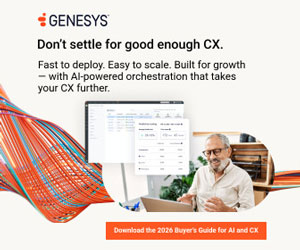

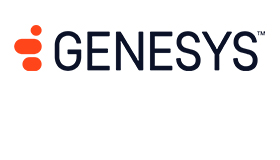 Genesys empowers more than 8,000 organisations in over 100 countries to improve loyalty and business outcomes by creating the best experiences for their customers and employees. Through Genesys Cloud, the AI-Powered Experience Orchestration platform, Genesys delivers the future of CX to organisations of all sizes so they can provide empathetic, personalised experience at scale. As the trusted platform that is born in the cloud, Genesys Cloud helps organisations accelerate growth by enabling them to differentiate with the right customer experience at the right time, while driving stronger workforce engagement, efficiency and operational improvements.
Genesys empowers more than 8,000 organisations in over 100 countries to improve loyalty and business outcomes by creating the best experiences for their customers and employees. Through Genesys Cloud, the AI-Powered Experience Orchestration platform, Genesys delivers the future of CX to organisations of all sizes so they can provide empathetic, personalised experience at scale. As the trusted platform that is born in the cloud, Genesys Cloud helps organisations accelerate growth by enabling them to differentiate with the right customer experience at the right time, while driving stronger workforce engagement, efficiency and operational improvements. 

